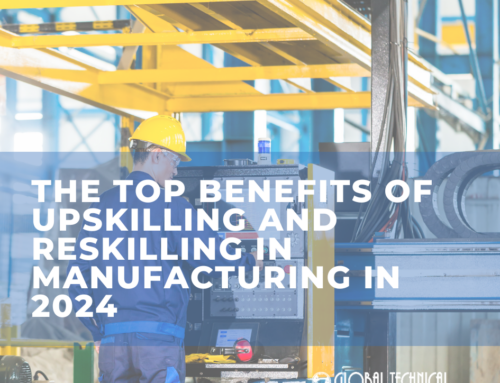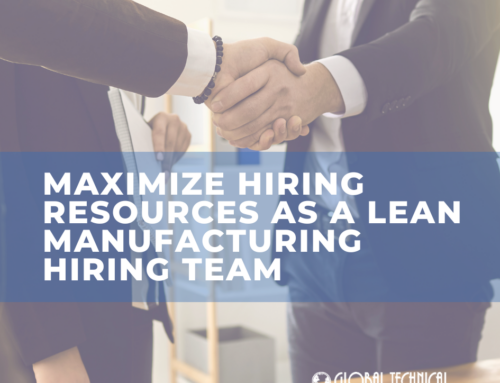This current extremely competitive market means that turn over will happen – no matter what a business does to avoid it. While there was once a time that businesses brushed it off and kept moving, that time is no longer.
The 2020 outlook on jobs across all industries show the same trends as this past year, with the number of jobs open being greater than the number of people looking for jobs. For the manufacturing industry, this issue can create a market where people come and go in job roles faster than normal because of the lure of other businesses, greener pastures, and other things.
Businesses need to be smart and proactive and have a plan in place to keep their business moving forward regardless of who moves on to other opportunities.

Turnover happens. What can you do about it?
First, consider why turnover is happening in the first place.
Did you hire the right people in the first place?
Developing an in-depth candidate profile can help you stay on track with who you need to hire. This can also help you to avoid making a hire that really doesn’t fit your job or company. While taking the time to hire the right talent in the first place (and not hiring quickly) takes time, it’s a worthy investment.
Are you offering competitive pay and benefits?
This is very important. Knowing where you stand in the market can help attract better talent but also help you keep the top talent you have. Look objectively and beef up areas of your compensation and benefits when you can to really create an enticing package.

Are you giving regular praise and recognition?
This goes a long way in keeping employees happy. Turnover can happen when employees don’t feel they are valued or appreciated. Simply saying thank you for what you do goes a long way.
Have you spent the time to develop and offer career path and progression for your employees?
Coming up with a plan for your employees to advance in your company shows that you are invested in their long-term success. If you work together to create a clear advancement plans and work on how to get your employees there you’ll create an environment where employees feel valued.

Develop flexibility options if possible.
Flexibility in the workplace can mean a few things. Trusting your employees to get their work done and not micromanaging their moves gives them the freedom to adapt when they need to. You can work on measuring results and not hours put in the job to foster a flexible environment as well.
Provide training and skill development.
Continued education helps both the employee and the employer. Again, employees feel invested in and feel the company has their interests in mind and it creates a more talented workforce for you. Whether you send them out of the company for training or keep it in house depends on your business, but don’t forget this important part of reducing employee turnover.
So you’ve read all these tips, and you’ve got a good handle on all of these things we’ve outlined above. But turnover is still happening.

What can you do to create a series of systems and processes that helps reduce the friction caused by an employee leaving?
Anticipate turnover. Statistics show that people don’t stay at the same job for decades anymore, across all industries. Knowing this and understanding the need to be proactive in your turnover plan means you are ready for any job vacancy no matter the reason.
Create processes. Find time to create great processes for the following: – when an employee gives you their notice – when an employee vacates their position – an entire hiring process – employee on-boarding process Well-documented processes make the entire process clear for all those involved.
Build your bench. This means having great backfill of internal candidates for your highest skilled jobs. Recognize both your current employees career desires and their skills and have a written plan of who will fill the most skilled job roles if they become vacant. This keeps business moving forward with less friction.
Get better at pre-screening. Create a robust employee profile for each respective job you have at your organization so you know what kind of person you need to fill those jobs when they become vacant. Spend time before your job is vacant to determine what skills, characteristics, traits, and background ideal candidates will have so you spend time on the best ones.

Partner with a staffing agency. Don’t do all the work alone. GTR is ready to help you with recruiting and hiring – and also help guide you with how to develop a great job profile, help you with pre-screening, to create processes that help keep employees working for you, and so much more. We really become an extension of your hiring department to help you do all things recruiting and hiring so you can Build A Workforce That Works. Contact us today.





